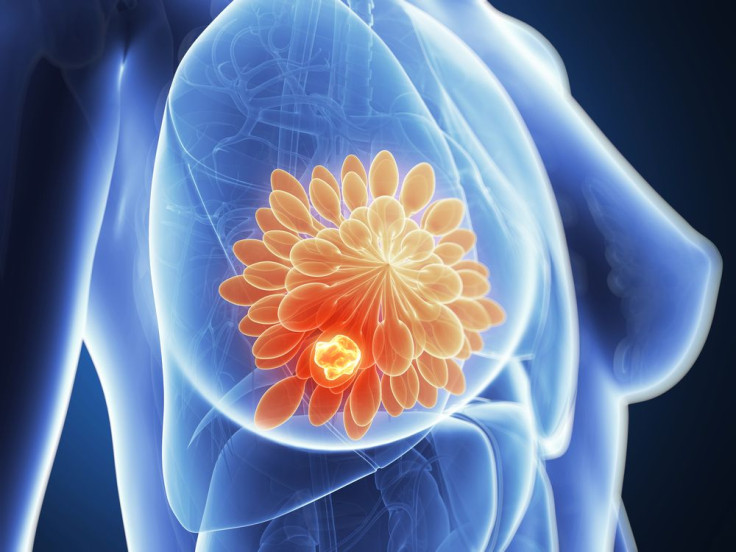High Cholesterol Provokes Breast Cancer Growth And Spread: Tumors Have Developed New "Source Of Fuel"

While a number of studies in past have linked high cholesterol with growth of cancer, the latest from researchers at the Duke Cancer Institute may be one of the most significant. The study found that a byproduct of cholesterol functions like the hormone estrogen, causing growth and spread of common forms of breast cancers. However, the research team also found that anti-cholesterol drugs like statins appear to diminish the impact of estrogen-like molecule — paving the way for new treatment modalities for breast cancer patients. The study was published in the journal Science on Friday.
In an earlier study, researchers at the Kimmel Cancer Center at Jefferson found that a typical American diet, high in fat and cholesterol, caused rapid growth and spread of breast cancer in mice. There have been several more studies establishing the same link. What distinguishes the recent Duke study from the similar studies in the past is the exact mechanism of cholesterol in the way it impacts tumors. “A lot of studies have shown a connection between obesity and breast cancer, and specifically that elevated cholesterol is associated with breast cancer risk, but no mechanism has been identified,” said senior author of the study, Dr. Donald McDonnell, chair of the Department of Pharmacology and Cancer Biology at Duke, in a press release.
What the researchers have found is that is isn't cholesterol itself, but a byproduct of cholesterol that spurs the spread and growth of breast cancer. When cholesterol is metabolized in the body, it produces a number of by products. One of those, 27-hydroxycholesterol (or 27HC) mimics the way that estrogen affects the body, and as a result, can "independently drive the growth of breast cancer.” The researchers from the same lab earlier found that 27HC behaved similarly to estrogen in animals. Estrogen, the primary female sex hormone, has been implcated in an estimated 75 percent of all breast cancers, according to the press release.
The researchers wanted to determine whether estrogen on its own was sufficient to promote breast cancer and whether controlling it could reverse the growth. McDonnell and colleagues used mouse models, highly predictive in humans as well to demonstrate the direct role of 27HC in growth and spread of breast tumor. When mice were treated with antiestrogens or with elimination of 27HC supplements in animals, cholesterol metabolite activity was greatly recudec.
The results of the mice study were supported by tests on human breast cancer tissue. Using human tissue, the researchers were able to show a direct link between an abundance of enzymes that make 27HC molecules and the aggressiveness of the tumor. This molecule can be transported to the tumor from other places in the body. “The worse the tumors, the more they have of the enzyme,” said Dr. Erik Nelson, a post-doctoral associate at Duke and lead author of the study, in the press release.
Perhaps the most striking result of the study is that we now know that there is a clear association between 27HC exposure and the development of resistance to the antiestrogen tamoxifen — the most commonly used breast cancer therapeutic. “This is a very significant finding,” McDonnell said. “Human breast tumors, because they express this enzyme to make 27HC, are making an estrogen-like molecule that can promote the growth of the tumor. In essence, the tumors have developed a mechanism to use a different source of fuel.”
The study suggests that beyond limiting risk of breast cancer by keeping cholesterol under control, women with breast cancer should work with their doctors to add cholesterol-fighting drugs like statins to their regime, in order to make sure that endocrine tharapies like tamoxifen and aromatase inhibitors actually retain their full efficacy.
Published by Medicaldaily.com



























